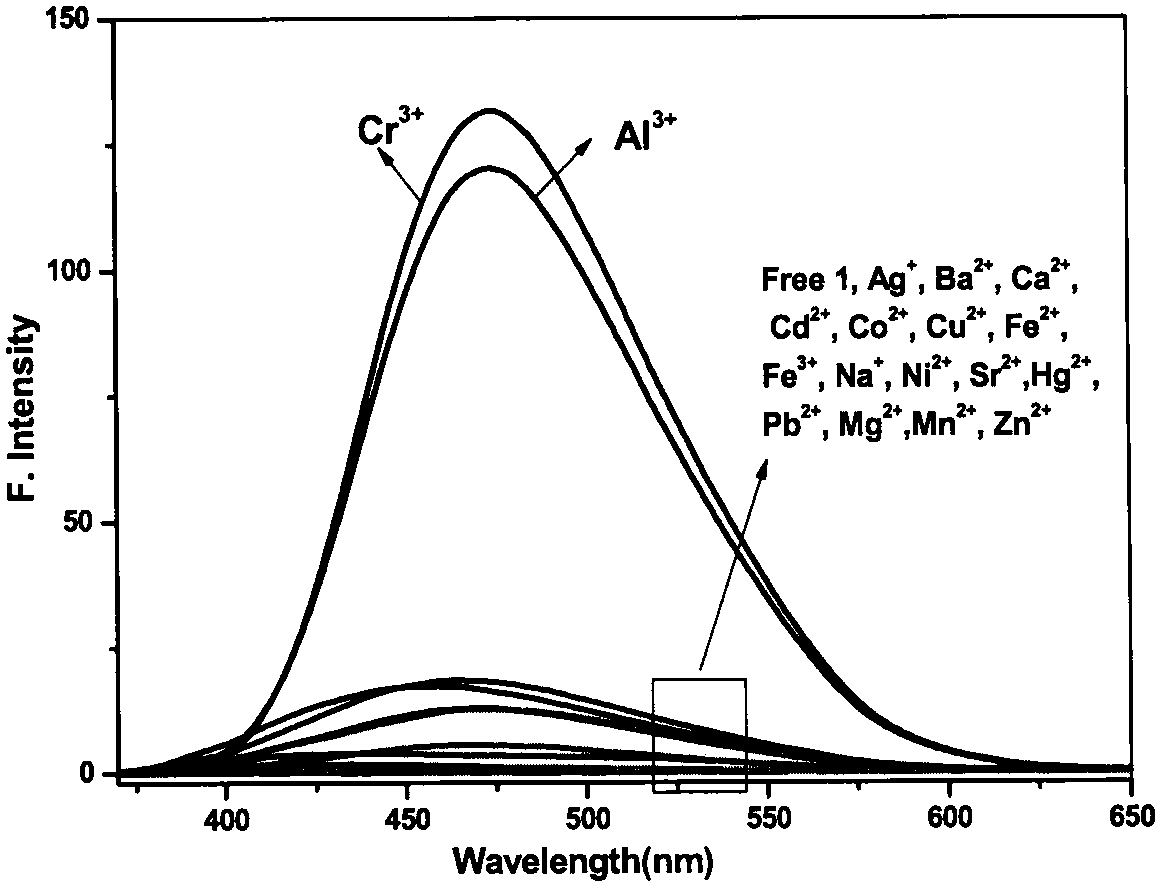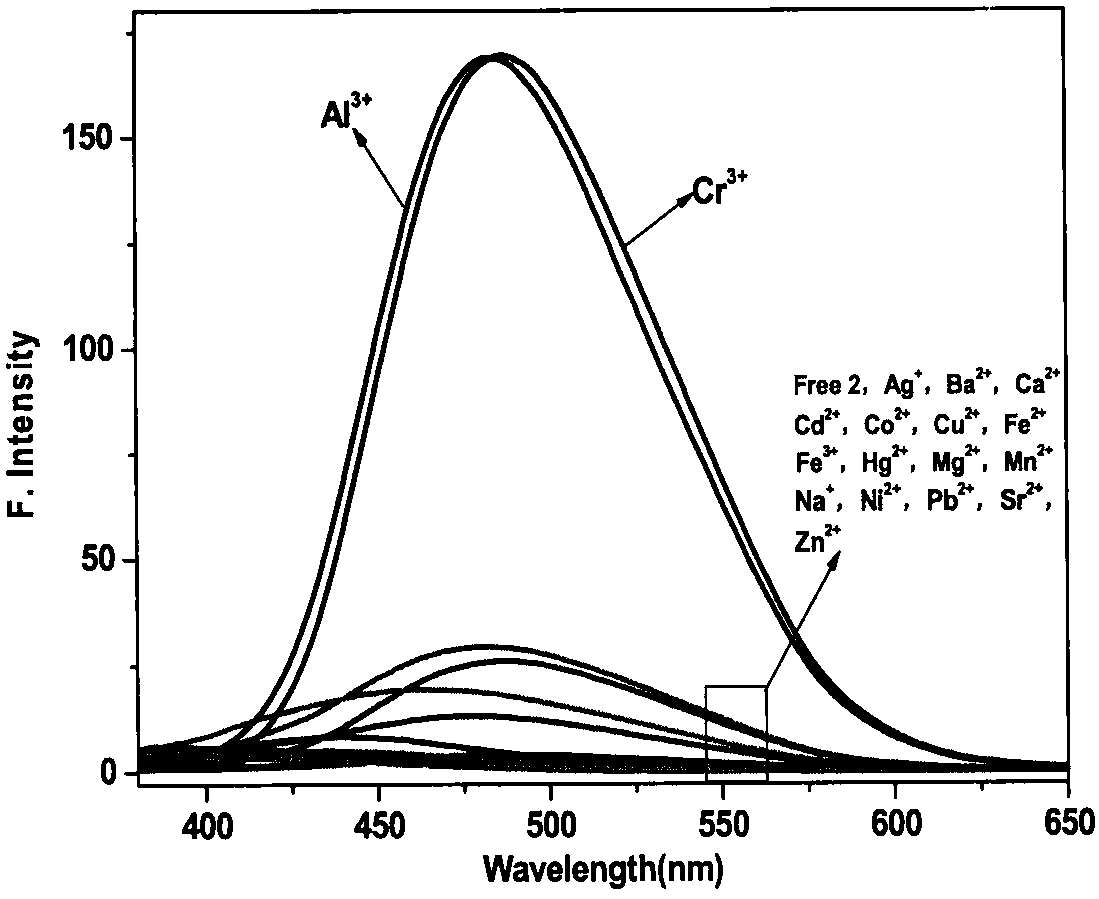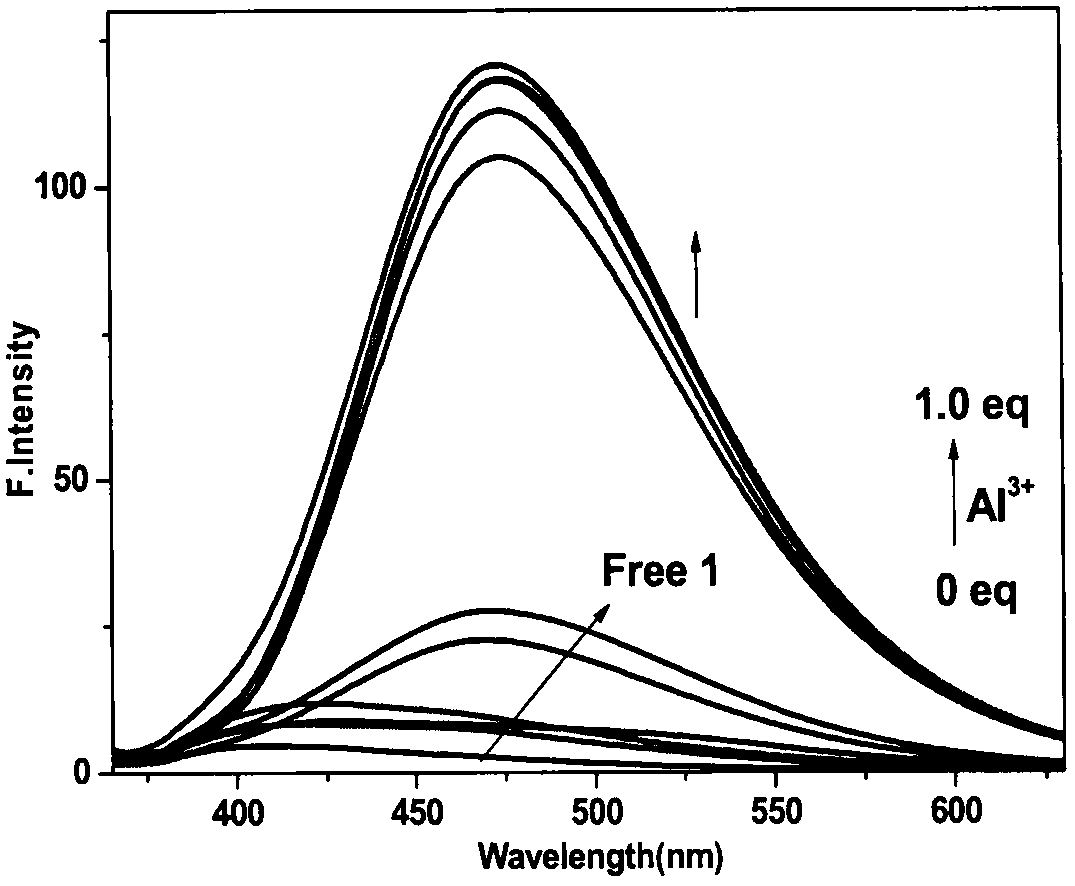Aluminum and chromium ion multi-channel response probe and synthesis method and application thereof
A chromium ion, multi-channel technology, applied in chemical instruments and methods, analysis by chemical reaction of materials, material analysis by observing the impact on chemical indicators, etc., can solve problems such as less research, and achieve synthesis methods. Simple, improved detection efficiency, and the effect of broad application prospects
- Summary
- Abstract
- Description
- Claims
- Application Information
AI Technical Summary
Problems solved by technology
Method used
Image
Examples
Embodiment 1
[0053] Synthesis of 2-ferrocenyl-4,5-bis(2-thienyl)imidazole
[0054] Under argon protection, ferrocene formaldehyde (100mg, 0.47mmol), 2,2'-di(2-thienyl)ethylenedione (109mg, 0.49mmol), ammonium acetate ( 725mg, 9.4mmol), 1mL glacial acetic acid and 10mL 1,4 dioxane solvent. The reaction solution was heated to reflux, and the reaction progress was monitored by thin-layer chromatography. After the reaction was complete, the reaction mixture was neutralized to pH>7 with saturated sodium carbonate solution. Extracted with dichloromethane, the extract phase was washed with water, dried, filtered, and the solvent was removed under reduced pressure. The crude product was separated by column chromatography (dichloromethane / methanol=98:2, V / V) to obtain 35 mg of yellow crystals with a yield of 49% and a melting point of 161-163°C. 1 H NMR (500MHz, (CD 3 ) 2 SO, TMS): δ12.40(s, 1H), 7.67(s, 1H), 7.39(s, 2H), 7.19-7.15(d, 2H), 7.00(s, 1H), 4.92(t, 2H) , 4.37(t, 2H), 4.41(s, 5H); ...
Embodiment 2
[0056] Synthesis of 2-ferrocenyl-4,5-bis(2-furyl)imidazole
[0057] Under argon protection, ferrocene formaldehyde (100mg, 0.47mmol), 2,2'-bis(2-furyl)ethylenedione (93mg, 0.49mmol), ammonium acetate ( 725mg, 9.4mmol), 1mL glacial acetic acid and 10mL 1,4 dioxane solvent. The reaction solution was heated to reflux, and the reaction progress was monitored by thin-layer chromatography. After the reaction was complete, the reaction mixture was neutralized to pH>7 with saturated sodium carbonate solution. Extracted with dichloromethane, the extract phase was washed with water, anhydrous MgSO 4 Dry, filter and remove the solvent under reduced pressure. The yellow crude product was separated by column chromatography, and gradient elution was carried out with dichloromethane, petroleum ether / dichloromethane / ethyl acetate (10:40:1, V / V / V) as the eluent to obtain 91 mg of yellow crystals , the yield was 70%, and the melting point was 236-238°C. 1 H NMR (500MHz, (CD 3 ) 2 SO, TMS...
Embodiment 3
[0059] The effect of fluorescent detection probe on each ion
[0060] Prepare 1×10 in 100mL volumetric flask -4 The embodiment 1 of mol / L and the probe molecular acetonitrile solution of embodiment 2, in 25mL volumetric flask, preparation concentration is 2.5 * 10 -3 mol / L aqueous solutions of different metal ions; use a pipette gun to take out 2mL 1×10 -4 After the mol / L probe molecule acetonitrile solution was mixed with 80 uL of the above-mentioned ion solutions, the fluorescence emission spectrum was tested in the range of 350-650 nm (excitation wavelength was 320 nm).
[0061] The result shows, the probe molecule of embodiment 1 and embodiment 2 is only to Al 3+ 、Cr 3+ Ion has fluorescence response; The probe molecule of embodiment 1 and embodiment 2 adds Al 3+ 、Cr 3+ Strong fluorescence emission peaks appear at 474nm and 480nm respectively after the ions, and the fluorescence intensity increases by 42-132 times; its selectivity is manifested in the addition of Na +...
PUM
 Login to View More
Login to View More Abstract
Description
Claims
Application Information
 Login to View More
Login to View More - R&D
- Intellectual Property
- Life Sciences
- Materials
- Tech Scout
- Unparalleled Data Quality
- Higher Quality Content
- 60% Fewer Hallucinations
Browse by: Latest US Patents, China's latest patents, Technical Efficacy Thesaurus, Application Domain, Technology Topic, Popular Technical Reports.
© 2025 PatSnap. All rights reserved.Legal|Privacy policy|Modern Slavery Act Transparency Statement|Sitemap|About US| Contact US: help@patsnap.com



